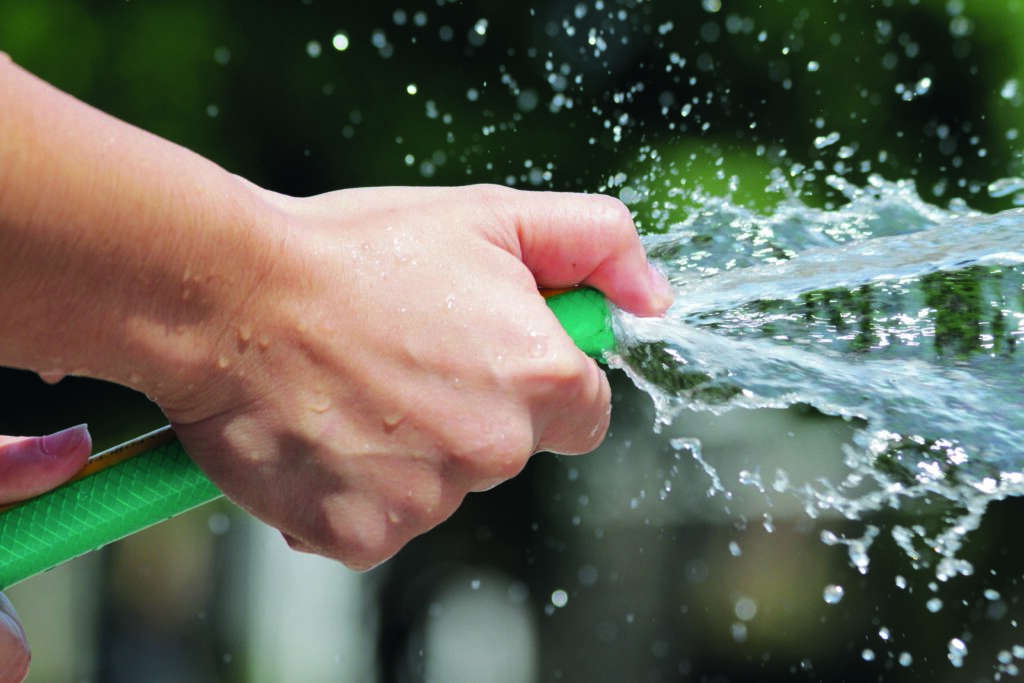As 2017 approaches, pig producers are being encouraged to set a New Year’s resolution to deep clean their units.
Increasing pressure to tackle antimicrobial resistance, from Government and the media, means a preventative approach is required, according to Martin Smith, AHDB Pork veterinary team manager.
“As well as the livestock target (of 50mg/kg), species-specific targets are due to be set this coming spring and will run for 10 years from 2018,” Mr Smith said. “Because of the increased public and media scrutiny on antibiotic use, we need to take a proactive approach to work together as an industry to reduce our on-farm usage.”
With the targets in mind, producers are being urged to tighten up hygiene management on their units, and review cleaning and disinfection (C&D) programmes.
“A consistently high standard of C&D is an effective way to minimise disease outbreaks and halt the on-farm cycle of re-infection for diseases such as swine dysentery and salmonella,” Mr Smith said.
“It also helps to improve the overall health and welfare of pigs, maximise productivity and, most importantly, reduce the need to administer antibiotics, which boosts profit margins. It’s therefore important that producers make deep cleaning a priority for 2017.”
Deep cleaning protocol
An annual deep clean will help to reduce the steady accumulation of background pathogens that can cause disease outbreaks. The protocol can also be carried out routinely after acute infections, to ensure that all pathogens are removed before restocking.
Mr Smith explained: “It’s important to note that an annual deep clean does not replace routine cleaning and disinfecting protocols between batches. It is added due diligence that goes beyond the routine clean.
“An annual review of protocols and implementation of a deep clean is a good opportunity for producers to review disinfectants.
“There are various disinfectants on the market, with different active ingredients (AI) which all work in different ways and vary in price.

“So, if you know there are certain bugs present, you might choose a certain product. It’s all about adapting to the farm situation to ensure effective decontamination. Your vet will be able to advise on which product is right for you.
“Once the most effective disinfectant is chosen, all organic matter should be removed from surfaces such as floors, walls, ventilation ducts, feeders and drinkers.
“Surfaces should then be soaked overnight in water containing a detergent-sanitiser, before power washing, drying and applying a disinfectant. It’s particularly important to remove pooled water in feeders and drinkers before disinfection.
“You should always refer to the disinfectant’s product label and make sure you adhere to the Defra General Orders (GO) dilution rates that are needed to control enteric bacteria and those causing skin and joint infections.”
Cleaning and disinfectant tips
* Choose the right disinfectant for your farm
* Remove all organic matter from surfaces, such as floors, walls, ventilation ducts, feeders and drinkers
* Soak pens overnight to ease washing the next day, using a detergent-sanitiser in the water
* Power wash thoroughly to remove all organic matter
* Dry surfaces before disinfecting thoroughly using a power washer
* Use Defra General Orders disinfectant concentrations
* Do not rely on metering devices – they’re usually inaccurate – mix disinfectant in a tank and stir regularly if not used quickly
* Don’t forget to disinfect water lines
* Make sure that you allow enough time for surface areas to dry before restocking
The additional step of deep cleaning pig units may be an unwanted expense, but that’s outweighed by the potential benefits, Mr Smith said. A clean pig environment could lead to an increase in growth rates, reduce disease pressure and cut medicine costs, for example.
“There’s no question that taking the extra time to carry out a deep clean is really worthwhile,” Mr Smith added.
“However, I’d advise that producers design a protocol that is relative to their own business, using the knowledge of target bugs on one hand, and the technical
capabilities of disinfectants on the other.”
Choosing the right disinfectant
Recent research, led by the Animal and Plant Health Agency (APHA) and funded by Defra, reinforced the importance of using the correct disinfectant.
Becky Gosling, APHA senior research scientist, explained that the aim of the ‘R8’ project was to understand more about salmonella and how to control it on-farm.
She said: “There were six strands to the project. One of them focused on the effectiveness of disinfectants and detergents, so that validated recommendations can be made to producers.

“Experiments used a range of disinfectants, and we’ve already built up a wealth of evidence about the different types of products available. In particular, this includes the importance of choosing the right product for the farm situation.”
The project found that chlorocresol-based products are most effective when used in foot dips, and glutaraldehyde-based products are most effective for surface cleaning.
Hydrogen peroxide/peracetic acid-based products were found to be best for cleaning water lines. And as dirty water is a major cause of disease and poor performance in pigs, Ms Gosling recommended considering continuous water disinfection, even if you use mains water.
She added: “Producers need to consider what the disinfectant will be used for. If support is needed, I’d suggest talking this through with your vet, as they can help make an informed decision.
“After all, using the wrong disinfectant at the wrong dilution could be costly, in terms of productivity and overhead costs, if chronic diseases persist on your farm.”
How you can help set the targets
Producers are being encouraged to send their 2015 on-farm antibiotic usage data to AHDB Pork by the end of December, to help the industry set realistic reduction targets.
The pig industry, along with other livestock sectors, will be subject to 10-year reduction targets in spring 2017, to come into force in 2018.
Producers’ information will be benchmarked to help set informed and realistic targets.“At the moment, we’re in the dark as we only know total antibiotic sales data for pigs and poultry combined. This doesn’t give us an accurate picture of pig-specific use,” AHDB Pork’s Martin Smith said.
“We’re urging producers to get on board and send us their data by the end of this year so we can upload it to the electronic medicines book (eMB-Pigs).”
The eMB-Pigs website has been jointly-developed by AHDB Pork and the Veterinary Medicines Directorate (VMD), to provide aggregated and anonymous records of on-farm antibiotic usage.
Mr Smith added: “To date, uptake from producers has been good but we really need to get at least 70 per cent of total pig production figures. That’s why, at this late stage, we’re happy that producers send us their data and we’ll upload it, anonymously, to the system.”
*Producers should send their data to their KE manager, or via the pig hub website at www.pighub.org.uk and the team will take action from there.




